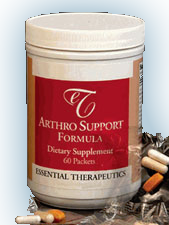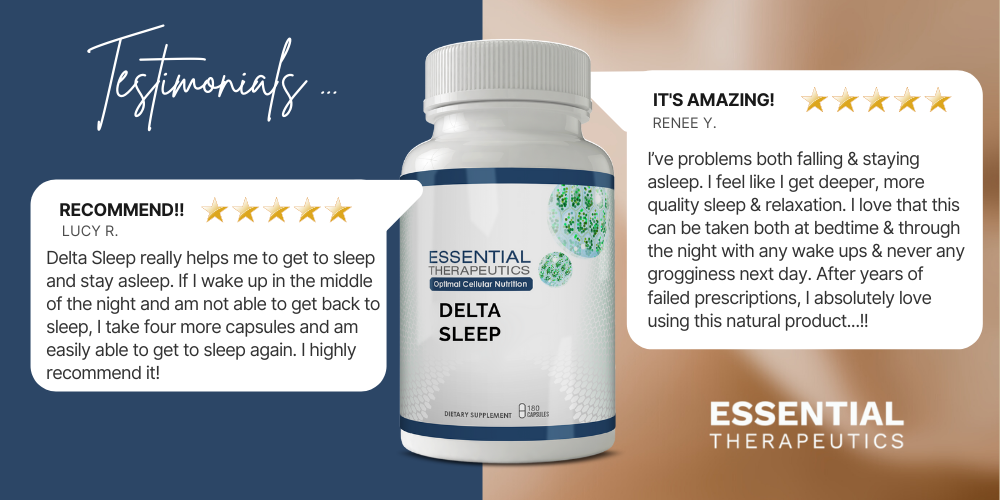Inflammation is the Trigger for Many Unwanted Health Conditions
How to reduce inflammation and decrease your risk for heart disease, stroke, diabetes, chronic pain, Alzheimer’s, Parkinson’s, certain cancers, and arthritis.
 We’ve all heard the phrase, “you are what you eat.” And guess what, it is true. Unfortunately, many of us have habitually eaten foods that have caused our cells to become filled with unhealthy chemicals known as eicosanoids. Inflammatory eicosanoids are associated with several common diseases, including fibromyalgia, heart disease, stroke, diabetes, arthritis, cancer, and chronic pain. All of these health problems have been linked to poor diet choices. These eicosanoid compounds come from arachidonic acid (AA), found in polyunsaturated fats (vegetable oils-safflower, peanut oil, and canola oil).
We’ve all heard the phrase, “you are what you eat.” And guess what, it is true. Unfortunately, many of us have habitually eaten foods that have caused our cells to become filled with unhealthy chemicals known as eicosanoids. Inflammatory eicosanoids are associated with several common diseases, including fibromyalgia, heart disease, stroke, diabetes, arthritis, cancer, and chronic pain. All of these health problems have been linked to poor diet choices. These eicosanoid compounds come from arachidonic acid (AA), found in polyunsaturated fats (vegetable oils-safflower, peanut oil, and canola oil).
Essential Fatty Acids (EFA)
Polyunsaturated fats are are further broken down into essential fatty acids (EFA). There are two groups of EFAs, Omega 6 and Omega 3. Both of these fatty acids are essential for optimal health.
Omega 3 rich foods, green leafy vegetables, flax seeds, and cold water fish, boost natural anti-inflammatory hormones. Omega 3 foods reduce inflammation and disease processes.
Omega 6 rich foods, whole grains, seeds, seed oils, and corn, are healthy in moderation. However, excess consumption of these foods, leads to excess production of arachidonic acid (AA) and eicosanoids.
AA is derived from the Omega 6 essential fatty acid foods (grains, flour, seeds, seed oils, corn, and grain-fed livestock), excess sugar, and trans-fatty acids. AA and eicosanoids create chain reactions that produce inflammation. Research shows that inflammation is the driving cause of many diseases including heart attack, asthma, stroke, chronic pain, arthritis, ulcerative colitis, menstrual pain, and recurrent headaches. Therefore, reducing chronic inflammation is the key to preventing and eliminating these illnesses.
Eicosanoids, Prostaglandins, Throbaxanes, and Leukotrienes
The literature on eicosanoids can be complex and somewhat confusing. I’ll do my best to make this article simple, and as painless as possible (no pun intended). While there are numerous eicosanoids, we’re only concerned with three groups:
1. Prostaglandins (PG) regulate constriction or relaxation of blood vessels.
 PG has positive effects including regulating kidney function, maintaining integrity of the stomach lining and initiating various aspects of childbirth. However, PG may also increase inflammation, pain, headaches, cramping, joint pain, and blood clotting (strokes). PG2 is the prostaglandin most associated with increased inflammation. PG2 comes from AA and Omega 6 foods.
PG has positive effects including regulating kidney function, maintaining integrity of the stomach lining and initiating various aspects of childbirth. However, PG may also increase inflammation, pain, headaches, cramping, joint pain, and blood clotting (strokes). PG2 is the prostaglandin most associated with increased inflammation. PG2 comes from AA and Omega 6 foods.
2. Thromboxanes (TX) are produced by blood cells known as platelets. TX increase blood clotting, blood vessel and bronchiole constriction. TX contribute to strokes, heart attacks, as well as pulmonary disorders including asthma, bronchitis, and chronic pulmonary obstructive disorder (COPD). TX comes from AA and Omega 6 foods.
3. Leukotrienes (LT) are produced from immune system cells. LT stimulate the immune system to release interleukins (IL), interferon (IFN), and other chemicals involved in anaphylactic reactions. LT plays a major role in allergic (hay fever, asthma, and various autoimmune disorders. LT comes from AA and Omega 6 foods.
The average arachidonic acid ratio to Omega 3 fatty acids of Americans is approximately 11:1. In patients with inflammatory conditions and neurological disorders, the AA/Omega 3 ratio is 20:1 or more. An AA/Omega 3 ratio of 1.5:1 is considered ideal. This is the ratio found in Japanese populations, which have the highest life expectancy and the lowest rate of cardiovascular disease. Since most Americans are carrying around at least 10–20 pounds of excess fat, it is no wonder that arthritis and other inflammatory diseases are out of control in our country. The average adult weighs 150 pounds; 30% of this is fat. This means that on average a person is carrying around 45 pounds of inflammatory imbalanced fatty acids!
Reduce Your Inflammation
Reduce or eliminate the foods that cause inflammation. You can help prevent or reverse inflammation and the diseases associated with it by avoiding the following foods:
All grains and grain products, including whole wheat bread, white bread (all breads), pasta, pizza dough, cereal, pretzels, crackers, bagels, pastries, wheat thins, scones, and all flour goods.
 Partially hydrogenated oils (trans fats) found in margarine, deep fried foods, and most prepackaged junk foods.
Partially hydrogenated oils (trans fats) found in margarine, deep fried foods, and most prepackaged junk foods.
Sodas, dairy (unless grass-fed cattle), soy, and sugar.
Corn oil, safflower oil, cottonseed oil, peanut oil, peanuts, soybean oil, sunflower oil, and the foods made with these oils including corn chips, potato chips, mayonnaise, tartar sauce, some salad dressings, and an assortment of prepackaged foods.
Reduce or eliminate the foods that cause inflammation. You can help prevent or reverse inflammation and the diseases associated with it by avoiding the following foods:
All grains and grain products, including whole wheat bread, white bread (all breads), pasta, pizza dough, cereal, pretzels, crackers, bagels, pastries, wheat thins, scones, and all flour goods.
Partially hydrogenated oils (trans fats) found in margarine, deep fried foods, and most prepackaged junk foods.
Sodas, dairy (unless grass-fed cattle), soy, and sugar.
Corn oil, safflower oil, cottonseed oil, peanut oil, peanuts, soybean oil, sunflower oil, and the foods made with these oils including corn chips, potato chips, mayonnaise, tartar sauce, some salad dressings, and an assortment of prepackaged foods.
Drastically Reduces Inflammation and Pain
Do you have an apple or pear shape body?
Doctors have a catchy term for that too-familiar round belly — the “apple” shape. If your fat has settled on the buttocks and thighs, you’re a “pear” shape. Don’t get sidetracked with the cutesy names, however. Belly fat (aka visceral fat) is serious business.
 “A big waistline puts you at increased risk for many health problems — diabetes, heart disease, high blood pressure, and stroke,” says Robert Eckel, MD, president of the American Heart Association.
“A big waistline puts you at increased risk for many health problems — diabetes, heart disease, high blood pressure, and stroke,” says Robert Eckel, MD, president of the American Heart Association.
Even skinny people can have unhealthy “hidden” belly fat. Research shows that fat may be folded deep inside the belly around the stomach organs, visible only by CT or MRI imaging. This fat puts people at the same health risks as someone with more obvious big girth, researchers say.
Belly fat doesn’t just lay idle at your beltline. Researchers describe it as an active “organ” in your body — one that churns out hormones and inflammatory substances.
Jump Start Weight Loss Program
My patients using the anti-inflammatory weight loss diet see a drastic reduction in their inflammation (CRP, SED rates, and other lab inflammation markers plummet while on the diet), and pain.
Losing yellow fat, or otherwise known as belly fat (thighs and buttock fat) where inflammatory chemicals are store. My patients who do my anti-inflammatory weight loss diet program are able to get off many of their dangerous meds including cholesterol, high blood pressure, diabetes, sleep apnea, heart burn drugs, and others.
You can learn more about the diet at this link www.metabolicprogram.com
For a limited Time … Save $100! Sign Up Today!
RELATED LINKS
 This is the product I recommend in practice for patients suffering from inflammation, especially arthritis patients.
This is the product I recommend in practice for patients suffering from inflammation, especially arthritis patients.
Glucosamine sulfate is an excellent approach to eliminating the destruction of osteoarthritis. A growing body of research supports the use of this natural supplement. Studies in Italy showed that glucosamine reduced arthritis symptoms by one half in 73% of the group, and 20% enjoyed total symptom relief. A Portugal study involving 1,208 patients and 252 physicians showed glucosamine to be quite effective in eliminating pain and stiffness caused by the disease.
Chondroiten sulfate is composed of a large number of sugar molecules. It attracts fluid into the proteoglygan molecules, and this fluid acts as a shock absorber. Chondroiten inhibits certain enzymes that can damage cartilage, while stimulating the production of proteoglycans and other molecules needed for healthy new cartilage growth. A study conducted in France, showed patients who received three months of chondroiten therapy had actually repaired a significant portion of their degenerated joint tissues.
Boswelia: one of the oldest herbs in Indian ayurvedic medicine. Studies show it to be a potent pain-relieving anti-inflammatory. Boswellia helps shrink inflamed tissue, build cartilage, increase blood supply, and repair damaged blood vessels.
Bromelain: a protein-digesting enzyme derived from pineapple. There is considerable research (over 200 medical journal articles) on its effectiveness in treating such conditions as inflammation, pancreatic insufficiency, and respiratory diseases. It blocks inflammatory chemicals called kinins. It also digests excess fibren, a chemical implicated in osteoarthritis, sciatica, ankylosing spondylitis, and scleroderma. As an anti-inflammatory, bromelain needs to be taken on an empty stomach. If taken with food, it acts as a digestive enzyme.
Curcumin: a perennial plant found in eastern Asia and parts of India. It is a popular arthritis remedy in India and a powerful pain-relieving anti-inflammatory. It is as strong as hydrocortisone without the side effects.
Devil’s Claw: a perennial vine native to South Africa. It is a potent anti-inflammatory and pain reliever. Studies in Germany have shown this herbal medication to be very effective in relieving lower back pain and associated sciatica.





What do u recommend if a person is allergic to sulfa. Even sulfodimides in small dies eventually break me out in a rash?
I’m not sure what you are asking as far as a recommendation for what?
https://essentialtherastore.com/collections/frontpage/products/fibromyalgia-cfs-jumpstart-package Please feel free to call clinic 205-879-2383 they can help answer any questions.